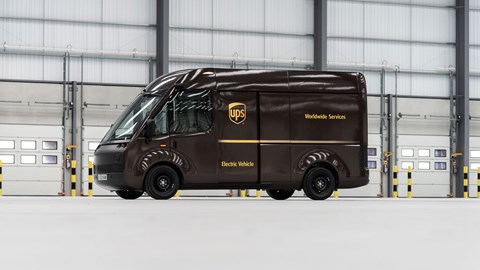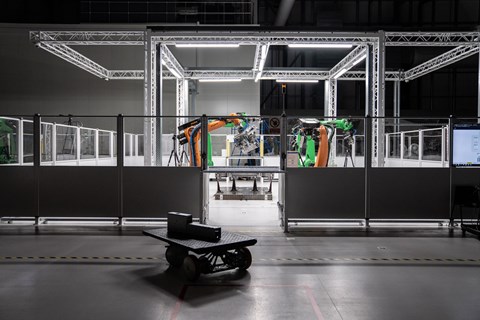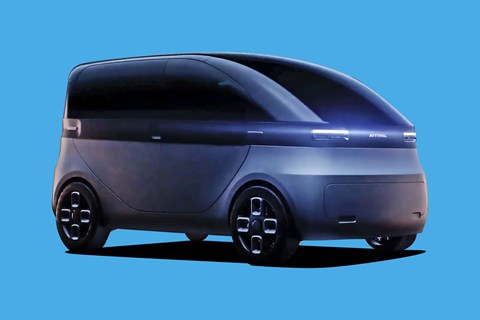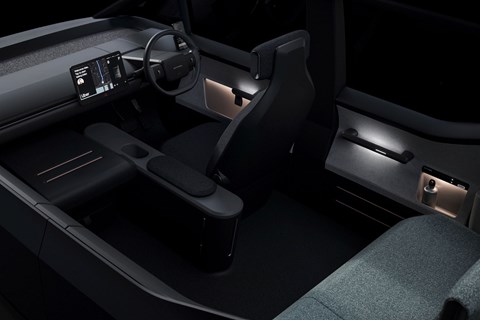► UK electric start-up Arrival scales back ambitions
► Van project still on course for 2022 launch
► Production set to start slower and bus and car projects on pause
UK-based electric vehicle start-up Arrival is still on track to start production in 2022 but the brand’s ambitions have been dialled back somewhat as it looks to save some cash.
The 2022 Q2 earnings have revealed that the company has cut back its delivery goals to just 20 vans for 2022, which is down from around 400 to 600, which was the aim as recently as April this year. However, that 20 represents the vehicles that will be delivered to customers – it will also be making vans for customer demonstrators and trials.
This is thanks in part to a decision to delay the opening of the second microfactory, destined for Charlotte, North Carolina. It was originally due to open and start making vans in the final three months of 2022 but this has now been delayed until 2023. However, Arrival has confirmed that the first site, in Bicester, Oxfordshire, will open as originally planned by the end of September 2022.
No revenue, not yet anyway
This scaling back of production and the time it takes for vehicles to be delivered to customers means that the company doesn’t expect to make any revenue in 2022. However, the decision to delay the opening of the Charlotte microfactory means that the Arrival should be able to make it through to the end of 2023 without needing to raise any additional capital.
It reported losses of $89.6m (£73.8m) in the second quarter of 2022, which is up from $56.2m (£46.2m) in the same quarter in 2021. As well as the delayed opening of the Charlotte microfactory, the company has reportedly paused its car and bus plans.
That said, the Arrival Bus has reached the stage where it is operating on public roads, ferrying employees from site to site. The customer trials and the investment in the bus microfactory will restart once Arrival has secured additional capital.
Vans on track
The Arrival Van has also started trials on public roads, with customer trials set to commence in London by the end of September. They’ll then start delivering packages by the end of the year. Trials will then start in Europe and North America in 2023.
Overall, signs remain comparatively promising, despite the company’s financial belt tightening. It says that demand for its products has grown and it has as many as 149,000 non-binding memorandums of understanding or orders for its vehicles. If all these are delivered then this would represent more than $6bn (£4.9bn) in potential revenue.

Tell me more about Arrival
The Banbury-based operation is designing and engineering the future of all-electric commercial vehicles and buses, and the world is taking notice. It was named the number one start-up to work for in the UK in 2020 by LinkedIn, orders for the van are flooding in from the likes of UPS and Royal Mail, and First Group – one of the biggest bus operators in the UK – is in talks with Arrival, too. Hyundai Motor Group has invested €100m (£85m) in Arrival to gain access to its EV engineering. ‘It’s the culmination of six years of hard work, and the team feels incredibly proud,’ says Tom Elvidge, Arrival’s senior vice-president of vehicle programmes.
Its van, Arrival’s first major project, is available in a range of shapes and sizes, with battery capacities ranging from 44 to 133kWh. Arrival estimates the van can do up to 215 miles on a single charge – plenty for a Royal Mail operative to perform a number of local delivery rounds, for example – and carry up to two tonnes.
And then there’s the bus. The design is modular, with different lengths and battery ranges easily integrated into the matrix. Flat surfaces and sanitation stations (the bus was revealed during the first wave of the Covid pandemic in 2020), along with wall-mounted panels with contactless payment functions, allow passengers to get on and off smoothly. Real-time updates via GPS tracking can be sent to your phone while you wait.

How does a start-up like Arrival offer such flexibility in its products? It’s all down to the way they’re built. ‘We’ve designed our own components on a modular, grid-based system for simple assembly,’ says Elvidge. ‘Each component can be used across all of Arrival’s platforms, allowing manufacturing at scale and rapid development of new vehicle types.’
Factories, but made micro
The start-up also isn’t one for centralising its production; instead, Arrival is setting up several ‘microfactories’. It buys up warehouse space near where demand is highest, to produce vehicles locally, transforming the space into small production hubs for whatever vehicle is required using something Arrival calls ‘cell-based assembly’ – a small footprint of square space in the microfactory designed to build one vehicle from the ground up. No rolling production lines or tight time deadlines, just the set of components put together by both robotic arms and humans. There are set to be four in the world so far.
‘Cell-based assembly means we can create any vehicle from the portfolio, quickly being able to reconfigure the same plant to build different products,’ says Elvidge. ‘If demand for a particular product wanes, we can switch to a different one.

‘Microfactories make distribution and production cheaper, easier and more sustainable,’ he adds. ‘They’re designed to be long-lasting facilities and, combined with Arrival’s in-house hardware and software, will lower costs to such an extent that our products will be competitive on price with fossil-fuel equivalents, and have a much lower total cost of ownership.’
The next project? An electric car, designed purely for taxi use. Arrival is working with Uber, the ride-hailing giant, to design the ultimate EV for its drivers and passengers.
‘Ride hailing plays such a key role in creating accessible and efficient transport systems,’ says Elvidge. ‘An integrated transport ecosystem will create cleaner solutions for people living in cities.’
The Arrival Car: what’s to come?

The greater good
Arrival knows that services like Uber are key to reducing congestion in cities, so designing a bespoke car for this market will help push along the transition. ‘It’s also addressing the global need to shift ride-hailing services over to electric to reduce emissions and improve air quality,’ adds Arrival’s Tom Elvidge.
Sharing’s caring
The battery cells and platform use the same componentry as the van and bus, albeit scaled to size for a passenger car. This reduces costs, and modular construction allows Arrival to build its vehicles in the same production ‘cell’ with only minor tweaks to the overall toolkit. ‘The durability, comfort, functionality and purpose-built design of Arrival’s vehicles all lend themselves to ride hailing,’ says Elvidge.

From the source
Arrival is calling on Uber drivers to give their feedback and demands on what the car should have, with surveys and driver focus groups from ‘key markets’ being set up at the time of writing.
Arrival has also reached out to mapping tech experts Here for navigation, with Elvidge pointing out that Here’s location data and flexibility make it a better fit than ubiquitous Google. A software system that can directly integrate with an Uber driver’s account and an expected maximum range of 186 miles is planned, too.
Elvidge adds: ‘Being able to drive and work a full day without needing to charge is a key requirement.’